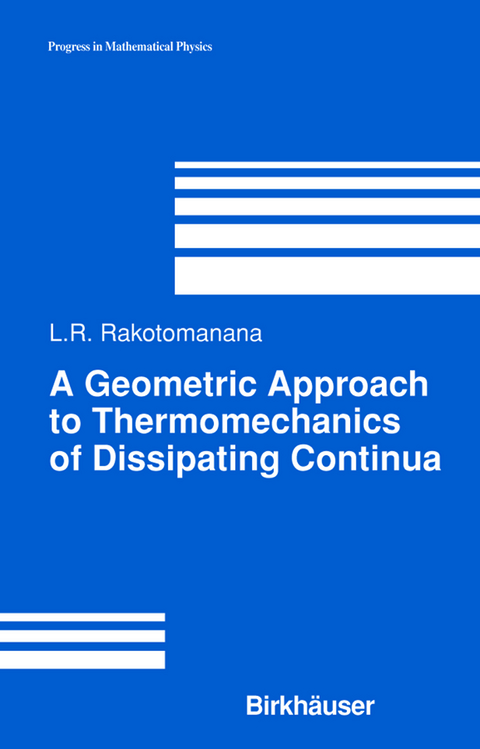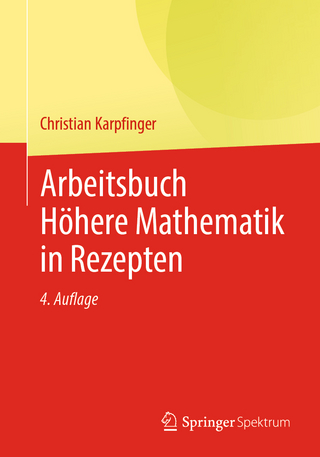
A Geometric Approach to Thermomechanics of Dissipating Continua
Springer-Verlag New York Inc.
978-1-4612-6411-8 (ISBN)
Geometry and Kinematics.- 2.1 Introduction to continuum motion.- 2.2 Geometry of continuum.- 2.3 Discontinuity of fields on continuum.- 2.4 Deformation of continuum.- 2.5 Kinematics of continuum.- Conservation Laws.- 3.1 Introduction.- 3.2 Boundary actions and Cauchy’s theorem.- 3.3 Conservation laws.- Continuum with Singularity.- 4.1 Introduction.- 4.2 Continuum with singularity of the rate type.- 4.3 Operators on continuum with singularity.- 4.4 General equations of continuum.- Thermoviscous Fluids.- 5.1 Fluids without singularity distribution.- 5.2 Fluids with singularity distribution.- 5.3 Overview of fluid-like models.- Thermoviscous Solids.- 6.1 Solids without singularity distribution.- 6.2 Solids with singularity distribution.- 6.3 Intermediate configurations.- 6.4 Overview of solid-like models.- 6.5 Elastic waves in nonclassical solids.- Solids with Dry Microcracks.- 7.1 Geometry.- 7.2 Kinematics.- 7.3 Conservation laws.- 7.4 Constitutive laws at the crack interface.- 7.5 Concluding remarks.- Conclusion.- A Mathematical Preliminaries.- A.1 Vectors and tensors.- A.1.1 Vector, space, basis.- A.1.2 Linear maps and dual vector spaces.- A.1.3 Tensors, tensor product.- A.2 Topological spaces.- A.2.1 Topological spaces.- A.2.2 Continuous maps.- A.2.3 Compactness.- A.2.4 Connectedness.- A.2.5 Homeomorphisms and topological invariance.- A.3 Manifolds.- A.3.1 Definition of manifold.- A.3.2 Tangent vector.- A.3.3 Tangent dual vector.- A.3.5 Mappings between manifolds.- B Invariance Group and Physical Laws.- B.1 Conservation laws and invariance group.- B.1.1 Newton spacetime.- B.1.2 Leibniz spacetime.- B.1.3 Galilean spacetime.- B.1.4 Physical roots of conservation laws.- B.2 Constitutive laws and invariance group.- B.2.1 Spacetime of Cartan.- B.2.2 Objectivity (frameindifference) of constitutive laws.- C Affinely Connected Manifolds.- C.1 Riemannian manifolds.- C.1.1 Metric tensor.- C.2 Affine connection.- C.2.1 Metric connection, Levi-Civita connection.- C.2.2 Affine connections.- C.2.3 Covariant derivative of tensor fields.- C.3 Curvature and torsion.- C.3.1 Lie-Jacobi bracket of two vector fields.- C.3.2 Exterior derivative.- C.3.3 Poincaré Lemma.- C.3.4 Torsion and curvature.- C.3.5 Holonomy group.- C.4.1 Orientation on connected manifolds.- C.4.4 Stokes’ theorem.- C.5 Brief history of connection.- D Bianchi Identities.- D.1 Skew symmetry.- D.2 First identities of Bianchi.- D.3 Second identities of Bianchi.- E Theorem of Cauchy-Weyl.- E.1 Theorem of Cauchy (1850).- E.2 Theorem of Cauchy-Weyl (1939).- References.
| Reihe/Serie | Progress in Mathematical Physics ; 31 |
|---|---|
| Zusatzinfo | XV, 265 p. |
| Verlagsort | New York |
| Sprache | englisch |
| Maße | 155 x 235 mm |
| Themenwelt | Mathematik / Informatik ► Mathematik ► Algebra |
| Mathematik / Informatik ► Mathematik ► Angewandte Mathematik | |
| Mathematik / Informatik ► Mathematik ► Geometrie / Topologie | |
| Naturwissenschaften ► Physik / Astronomie ► Festkörperphysik | |
| Naturwissenschaften ► Physik / Astronomie ► Mechanik | |
| Naturwissenschaften ► Physik / Astronomie ► Strömungsmechanik | |
| Naturwissenschaften ► Physik / Astronomie ► Thermodynamik | |
| ISBN-10 | 1-4612-6411-1 / 1461264111 |
| ISBN-13 | 978-1-4612-6411-8 / 9781461264118 |
| Zustand | Neuware |
| Informationen gemäß Produktsicherheitsverordnung (GPSR) | |
| Haben Sie eine Frage zum Produkt? |
aus dem Bereich


